While this style isn’t directly associated with kaido racers, it is sometimes found at similar events with kaido racers. It is also often miss-understood as being “bosozoku” to people outside of Japan.
Vanning, or “Banning” (バニング) is actually an American subculture interpreted through the eyes of Japanese van customizers.
In America in the late 1960s, people that didn’t fit into cultural norms, like surfers and hippie types, saw utility in these cargo vans created in the early 1960s. They would modify them to fit their needs, like camping and surfing. Also at the time hot rodding was popular, but was expensive for a lot of these types. This lead to the van being the perfect vehicle to customize for looks and hanging out in. Around the end of the ’60s, organized events to destinations like the beach for these type of vans became popular.
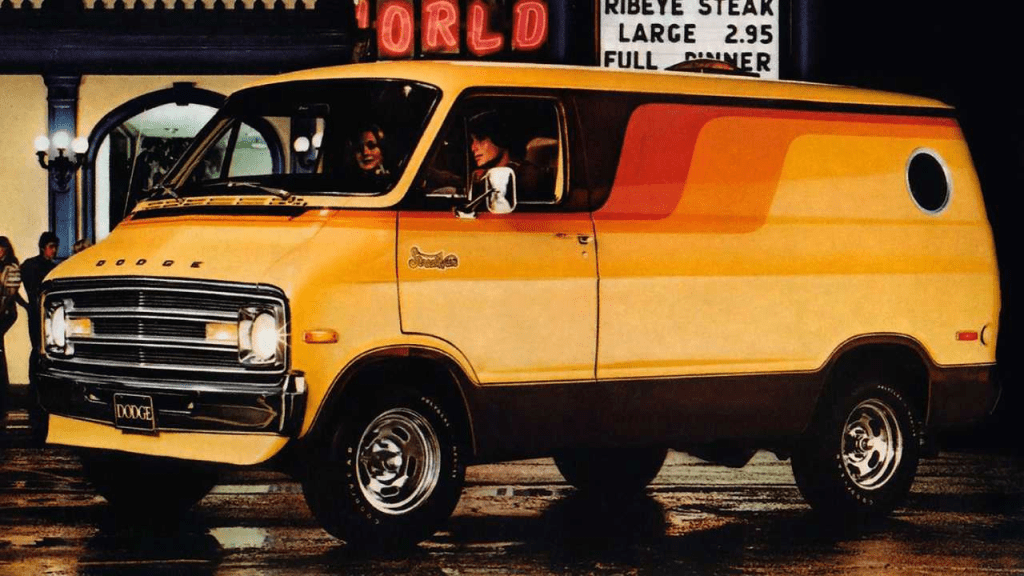
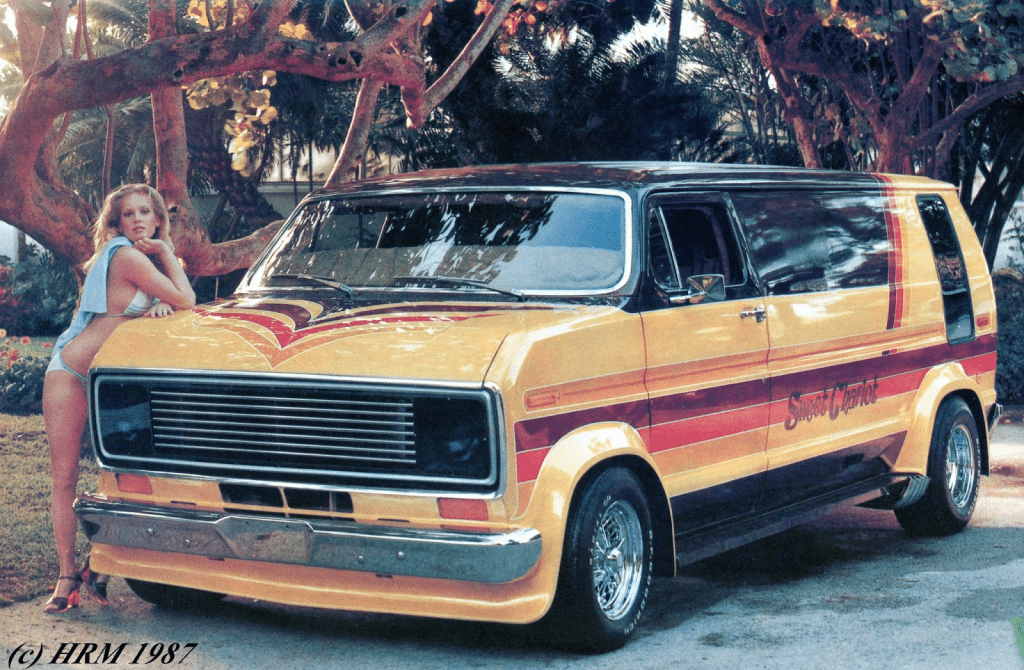
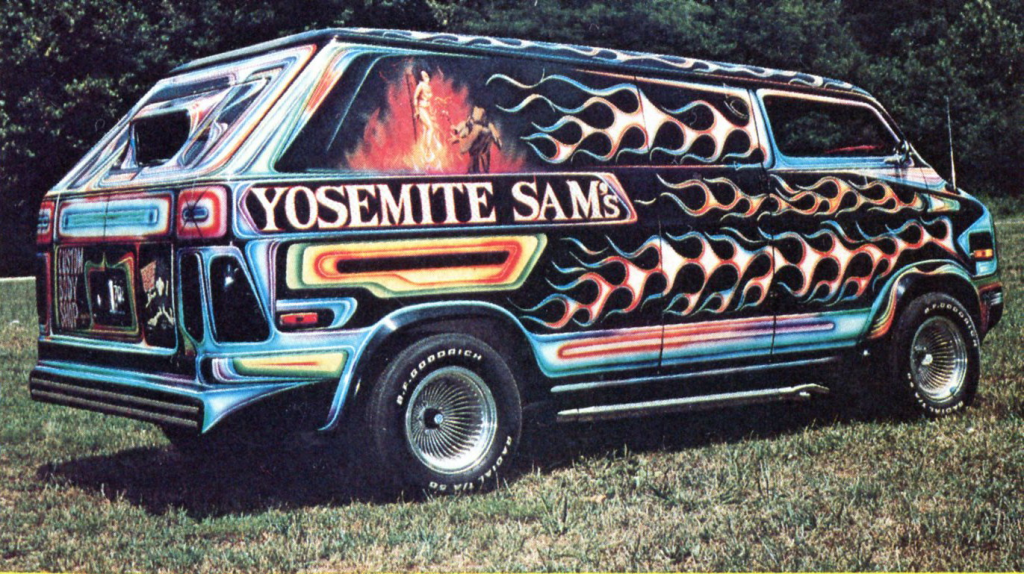
As these events grew in popularity, people would customize the exterior with murals and themes. They would also have names for their vans, often painted on the side of it. The customizing started to be a big part of the van meetups, creating a showing class for them where they were judged.
Vanning culture really took off in the 1970s. Events really picked up, and even got their own name, as a “truck-in” or “van-in.” A national van event called National Truck-In was created, bringing over 1000 vans across the country to it.
In the 1970s, Japan looked up to America for a lot of our culture and media. Things like the movie American Graffiti were translated in Japanese, spawning interest in our car culture and hot rods. When it came to these vans, they really didn’t have anything to reference as a guide on how to build them, so they just observed with photos and videos. This lead to them building with their domestic cars, like the Toyota Hiace and Nissan Caravan.
They started to develop their own styling when the financial bubble happened in the 1980s. Builders that weren’t aware of American styling started pulling from their own styling from Japan, developing a unique style. Creating things like rear spoilers and front bumpers to customize the look.
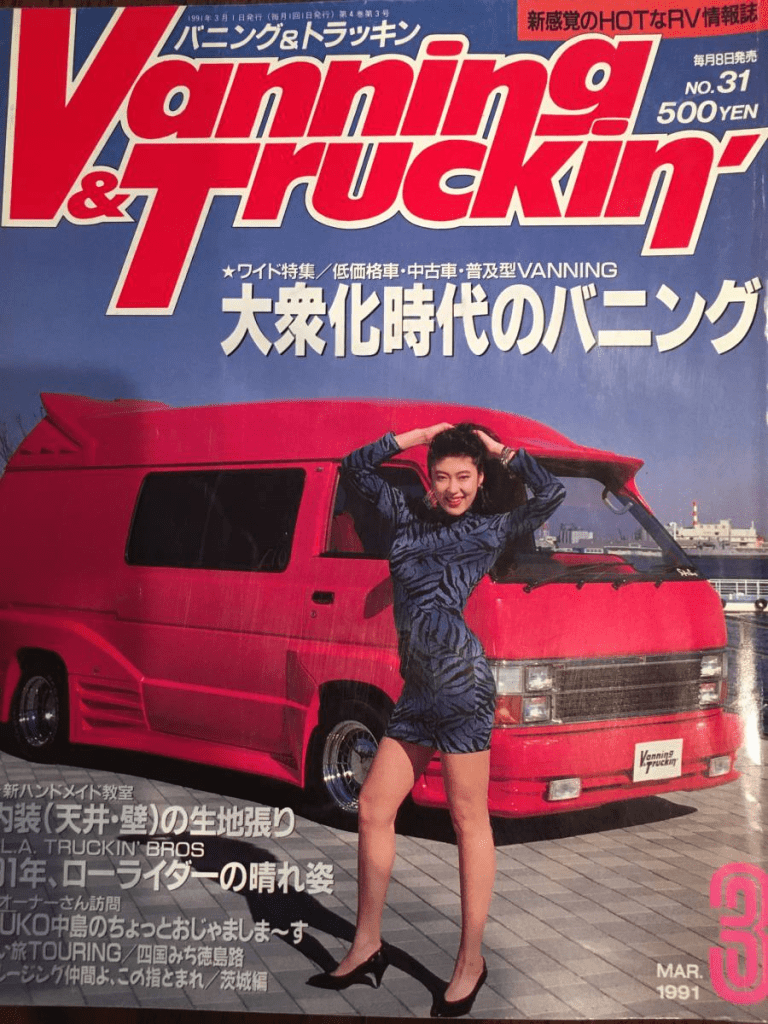
While these vehicles look like they are very illegal to own in Japan, they are actually built just barely conforming to the guidelines of their road laws. Prior to 2001 many vans would get an “8” number plate for special interest use, allowing them pass vehicle inspection with the safety standards for campers. But after 2001 they cracked down the use of getting these 8 number plates. With this, the vanning culture started slowing down in Japan. While there are still vans built like this today, it is much harder than it was prior to 2001.
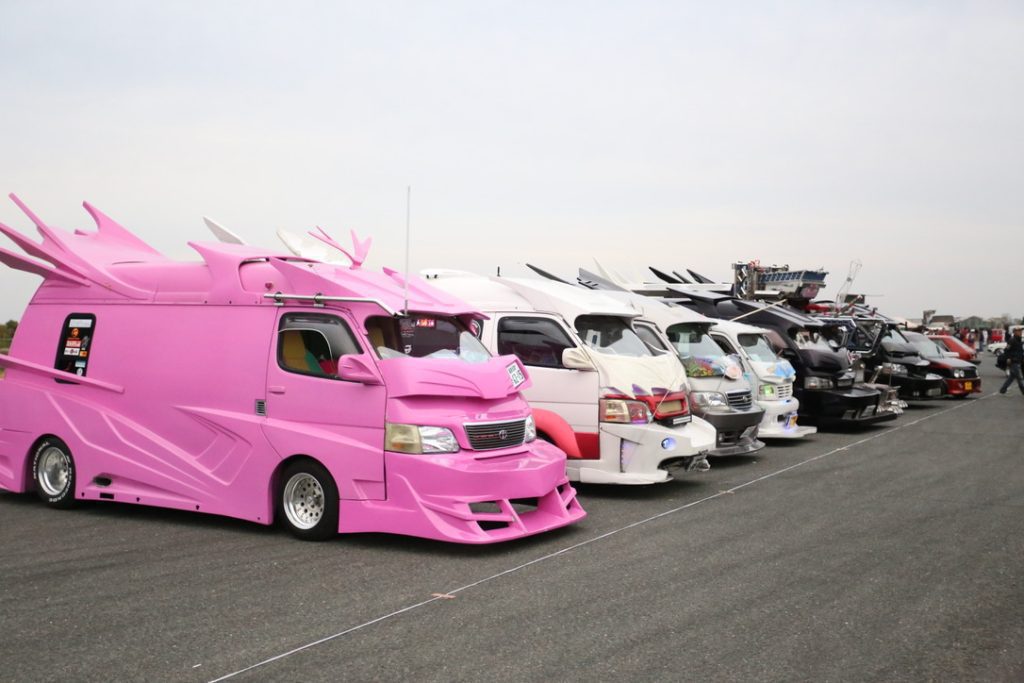
Vanning Style Guidelines:
Large and flashy aero
Fill in the rear set of windows, usually back and the two rear side windows
Sometimes they attach a window shaped like a start, similar to America Vanning
Pearl and metalic paint
Leather and vinyl interiors, completely redone
Large stereo systems
Flashing lights and neon, some overlap with dekotora
Popular Bases
Toyota Hiace (3rd and 4th gen)
Nissan Caravan
Popular brands associated
Disney and other cartoon characters
Musicians, usually women singers
Sources: Vanning Museum, Wikipedia JP, Car Moby, Motorz